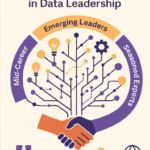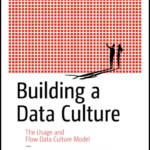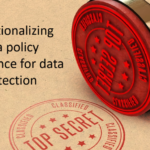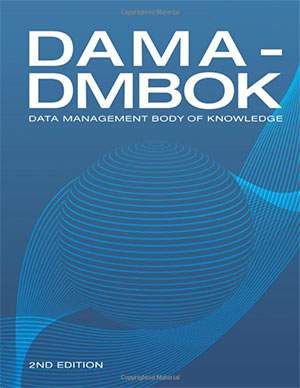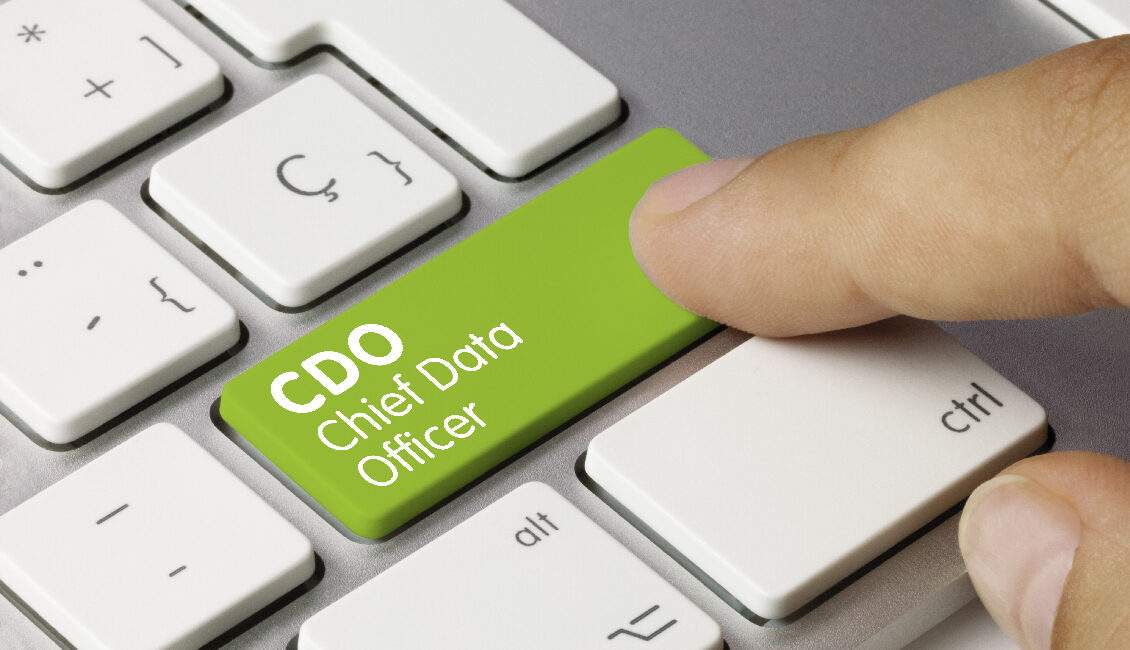
Establishing the Office of the Chief Data Officer (CDO)
Abstract: Establishing the CDO as a valuable organizational leader can sometimes seems like an impossible task, but it’s not. This paper offers some practical advice for organizations wanting to institutionalize the role of the CDO and standing up an office dedicated to making full use of its data assets. This paper specifically describes how organizations can:
- Establish the Value Proposition for Change
- Get Sponsorship
- Managing the Four Ps
Introduction
The CDO is responsible for enabling the business to use its data as a strategic asset to drive business value and increase profitability. The CDO establishes and leads activities to ensure that the business is data driven with quality data which is timely and fit for purpose. Policies, programs, strategies and organizational structures defined and guided by the CDO help the business optimize their efforts and innovate. These efforts, which are sponsored by organizational leaders and supported by verticals throughout the organization, are guided by the CDO. We hear these words all the time. They are the sort of things that industry pundits and highly compensated consultants publish on their web sites and white papers, but what the heck does this really mean?
But this is not where the business CDO’s role began. Data used to be a “risk to manage” with the main goal—keep me out of court and away from issues with regulatory agencies. The D in CDO was short for “data governance” and the initial C was short for another important acronym (CYA) rather than an executive board seat. Day-to-day operations involved data processing managers working to improve the quality of data and find ways for people to use more data. Today, organizations are by no means completely past this stage either. Many organizations have realized the value of centralized data management and overall organizational buy-in to use and protect data. However, keeping data first is still a daily struggle for many organizations. Those that put in the time and energy, are seeing the benefits and CDOs are at the forefront of those successes.
It’s important to note that while the CDO has grown into a more centralized organizational role, it remains in many organizations as still largely technology-driven. Even for these organizations, there are many untapped opportunities for data to rise even higher in the organization and drive additional value while also beginning to offer entirely new revenue streams. So, how should organizations make data the cornerstone of the organization?
Establish the Value Proposition for Change
The business case serves another valuable purpose; it provides the place where organizations can establish the value proposition for change. As many have probably heard, organizations don’t need another leader in the executive suite. However, many would agree, too, that CIOs have focused the vast majority of their resources on information technology to the detriment of data. So, when organizations realize that something has to change—but they may not know what—they should make sure that they develop a clear argument for change relative to building a better, more effective, and more efficient organization: a value proposition.
Therefore, organizations should develop a well-defined and clear business strategy that will help them achieve their business goals. As part of this, the business case must be an open, transparent, and inclusive process, one that is deliberately designed to bring people together and share ideas and experiences. Working this way will engender support and cooperation throughout the process and result in a plan that has buy-in from different parts of the organization. Getting stakeholders to collaborate is particularly important because these same stakeholders will interact with CDOs and the work that they lead in the future. Having stakeholders learn at the onset of the process is key to decreasing the amount of friction that will result in the future. Working this way will also help educate about data, its importance to the organization, and how CDOs will work on their behalf to make the organization more successful.
However, often the process used to develop a business case and the resulting documentation fail to provide the enterprise with the clarity and direction it requires to be successful. Such materials are often vague or generic, fail to correctly identify the challenges facing the enterprise, or don’t explain what it needs to do to realize its goals. A good business case, on the other hand, is decisive and actionable, focusing on a clear diagnosis of the business context, one or more guiding policies in response to the diagnosis, and coherent actions for achieving the identified outcomes.
As we often hear, digital business is placing new demands on enterprises and exposing them to new threats and opportunities. Information and technology are fundamental to these new challenges as they strengthen the new business models, products and services that are disrupting existing industries and creating new markets. To address these new demands and to reflect the growing importance of information and technology in both shaping and enabling business strategy, it’s essential for organizations to develop strategic planning frameworks and the processes, tools and templates needed to develop, execute and maintain an effective business and IT strategy (Cox, et al, 2017). This, of course, begins by establishing the business.
Get Sponsorship
Most CDOs still don’t survive the first 18 months, so it’s critical for organizations wanting to charter a CDO to get the bureaucratic protection and sponsorship of a champion, ideally someone very high in the organization. This will help overcome organizational inertia and develop buy-in for change. No matter how good organizations believe their idea are, stakeholders have to believe that it’s good before change can happen. Therefore, organizations must answer the question, “Who cares and why?”; this is the key to finding the people who may want the problem solved.
This also means that organizations should be ever aware of existing bureaucratic inertia and the effects that it causes. Armed with this understanding, they can use this information to thwart off behind-the-scenes activities that undermine and discredit CDO work. Individuals also should make sure that they are not too heavily vested in specific ideas, which could cause the organization to seize and start to question the CDO’s intent (Hagerty, 2015). Instead, organizations should dig deep and leverage their communication skills and solicit the help of stakeholders to develop plans and strategies. Stakeholders are people who has an interest or concern about a certain problem, the outcome or the decisions leading to the outcome. Stakeholders are not solely executives; anyone can be a stakeholder. The easiest way to determine if people are stakeholders is to determine if they are at risk of losing or gaining something. They may be at risk because they are ultimately responsible for an outcome. They may be at risk because organizations are changing the way the organization makes decision or performs a particular business process. Remember, when organizations make change, there are always winners and losers, and organizations must understand stakeholder dynamics in order to steer the discussion and activities in a direction towards the desired outcome.
So, be sure to understand who the stakeholders are. Help get them get involved and help them get skin in the game. Be sure to listen to their ideas before giving your opinion. Understand their perspective on issues and resist the urge to tell them that you have all the answers to their problems. Instead, organizations should carefully communicate their ideas without threatening the existing bureaucratic base. They should focus on listening, then use learned information to persuade stakeholders to take ownership of different parts of the problem and reshape the organization in ways that align with a desired outcome versus personal ideas and goals.
Learn how stakeholders can become part of your movement. And most of all, help them rally around desired outcomes versus specific methods, tools, and techniques. For example, if you want to develop a data management policy for your organization, keep it at a very high level. Don’t dive into details. Instead, prepare the policy so that it’s not controversial. If you do this, others across the organization will read and not detect any threats to their existing power base. Get buy-in at this level, first, then develop a companion process that describes the business steps that the organization should follow to satisfy the policy. Others will read this document, and, again, they won’t feel threatened by this stepwise approach. What is more likely to happen is that people will work together to solve this very particular and singular problem. Similarly, when this work is done, then—and only then—should organizations attempt to step into the standards world. This is where information technology lives, and this is where organizations will encounter the greatest resistance. However, this is also where organizations can most easily garner IT support. Why? Because organizations have addressed and solved the business problems without “rocking the boat”. The organization has focused on the outcome and not on the technical solution. When organizations reach this level, they should celebrate their success and ask IT for help developing technical standards. This is what IT does best, so get their help.
Recognize too, that there are many different kinds of stakeholders. They live across the organization at all levels, including the executive suite. Don’t overlook them. In one part of the organization, stakeholders may be managers, in other parts, they may be business people, and still in other parts, they may be executives. Each of these roles has a different and critically important organizational perspective that organizations should address. The last thing organizations need is to overlook a key stakeholder only to later learn that that individual could have helped the organization overcome a very difficult hurdle. So be sure to identify everyone and update your stakeholder list often; people come and go all the time.
One of the most important stakeholders is the CDO’s champion. This is an individual who supports the CDO and without this person’s support, organizational change won’t happen. CDOs are not limited to just one champion; ideally, CDOs would have many champions, but in reality, CDOs are likely going to have one, maybe two. Though it’s possible for CDOs not to have a champion—especially if the CDO is going to maintain organizational equilibrium—when CDOs are charged with making change, they are going to need help.
Addressing the Four P’s
Any organization wanting to establish a long term, a sustainable data management initiative needs to address four key elements at every step in their decision-making process. These elements reflect different perspectives of decision making that affect the organization, the CDO, and the role’s success. These perspectives represent the intersection of four powerful forces that affect virtually every aspect of the CDO’s world.
The forces include Policy, People, Process, and Technology (P3T). The first P is Policy, which are the rules defining how data is to be controlled and what rules are appropriate for its legal, ethical, and moral use. People is the second P. People describes a professionalized and data literate workforce that understands the value of data. They also are able to work across the organization, helping to effectively use data to the benefit of the organization. Processes provide a structure for reviewing and acting on requests for data access, data improvement, and use and exploitation and describe the way in which the organization will orchestrate its activities including who owns decisions under particular circumstances. The last element is Technology, which is the computing environments organizations uses to collect, process, and use data. The “P3T”, explicitly reminds us that the most difficult and unpredictable consideration is people. People are the glue that binds all these considerations together. It takes people to make sure that everything else works in concert. However, people can also easily derail any process, platform, or policy that you work to create.
Despite the compelling nature of data, we regularly observe organizations failing to manage their data assets without any degree of professionalism, systems, or appropriate technologies. If a problem involves data—and they all do—organizations respond with a technological solution with no regard for the human dimension involved. And without a solid foundation in data management, organizations have no framework (policy) to maximize their use of data. They fail to move their data assets per any repeatable and documented process, losing productivity (process). They spend far too much on IT investments (technology), and they don’t properly implement a data-centric means of enabling their respective knowledge workers (people) to use and exploit data assets.
A primary lesson, here, is that the solution to these problems is not fundamentally a technology-based solution. We rarely see organizations that would not benefit from a balance of people, process, policy, and technology (P3T) in their solution. What organizations must do is focus their data strategy on those business outcomes that help the organization exploit data across the entire digital landscape from acquisition to final disposition, creating value in the form of innovation, customer engagement, and growth. These characteristics combine to provide guidance to the organization’s data governance program.
Key Takeaways
- Build an open process. The business case must be an open, transparent, and inclusive process, one that is deliberately designed to bring people together and share ideas and experiences.
- Get to know people and ask many questions. If you are regularly asking about cursory items, then it’s easier for people to understand you are inquisitive. It may help later when you have to ask the tougher questions.
- Data management is principally a human problem. Don’t confuse technology with a business problem. Technology is a tool, and data leaders should use it to enhance business solutions, not replace them.
- Monetize the problem and put it into business terms. Develop a well-defined and clear business strategy that will demonstrate to leaders that data is critical to the organization and that managing it is the way forward.
References
- Cox, I., Weldon, L., & Sinha, M. (2017). The Case for Change: Why Digital Business Needs a New Approach to Strategy, 1–8.
- Desjardins, J. (2018, June 12). The Rise of the Chief Data Officer (CDO). Retrieved August 24, 2018, from http://www.visualcapitalist.com/the-rise-of-the-chief-data-officer-cdo/
- Hagerty, J. (2015). Developing Buy-In for Change, 1–19.
- Hitt, M. A., Colella, A., & Miller, C. C. (2014). Organizational Behavior. Wiley Global Education.






